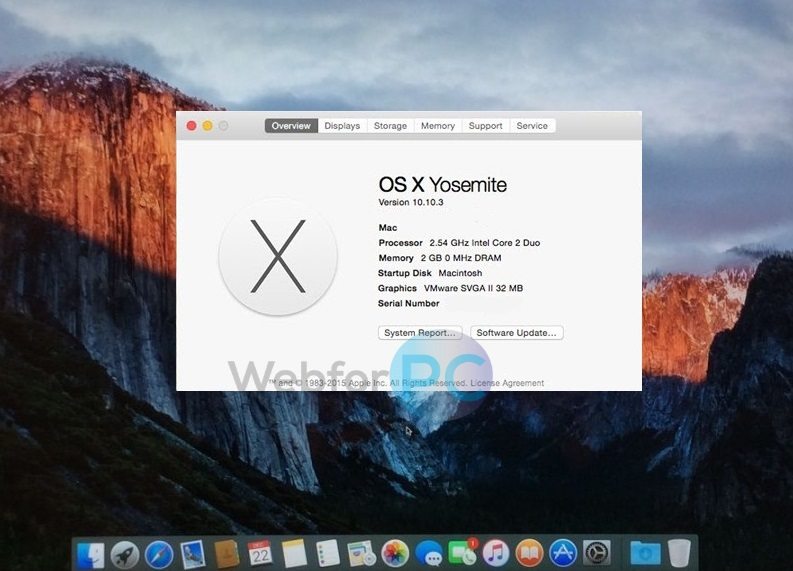

- MACOS SERVER VIRTUAL HOSTS PRO
- MACOS SERVER VIRTUAL HOSTS CODE
- MACOS SERVER VIRTUAL HOSTS DOWNLOAD
- MACOS SERVER VIRTUAL HOSTS MAC
If it returns with Syntax OK everything is perfect, I am doing this practical side by side and making screenshots to avoid any errors to my posts. Test if everything is OK and Point the Domains to Localhost.Save this with writing out Ctrl+O and Exit Ctrl+X Virtual hosts can be many as per your project need. If you don’t have a certificate obtained the server would give an error, if we state these links. I have commented”#” on the SSL usage on Port 443, you may uncomment the same as required. # ErrorLog "/var/log/apache2/localhost-error_log" #SSLCertificateKeyFile "/etc/apache2/ssl/localhost.key" #SSLCertificateFile "/etc/apache2/ssl/localhost.crt" SSLCipherSuite #ALL:!ADH:!EXPORT56:RC4+RSA:+HIGH:+MEDIUM:+LOW:+SSLv2:+EXP:+eNULL (Setting up SSL on localhost is in a Separate Post ) While if you are installing a WordPress Locally and using AMP, you may require an SSL to test things I prefer 443 HTTPS port only. To understand we have two ports Port:80 and Port 443, generally port 80 is an HTTP port, and 443 is an HTTPS port or SSL Port,
MACOS SERVER VIRTUAL HOSTS MAC
Setting up localhost on mac without any application is quickly done, and you may use it for development without any internet connection or offline. Sites – the default folder you already have.īy this time we have PHP, Apache running, and MySql as a database now we have to set up the ” Virtual Hosts,” e.g.: #Include /private/etc/apache2/users/*.conf ( To use user configuration files )Īlso, UserDir, as seen above, this is where the website files go. Sudo nano /etc/apache2/extra/nfĪs in the screenshot above edit the file uncomment : This would simply create a link between both.

Sudo mkdir /var/mysql ln -s /tmp/mysql.sock /var/mysql/mysql.sock
MACOS SERVER VIRTUAL HOSTS DOWNLOAD
Installation is the same as any app you download on your Mac.


Now let’s get ahead with MySQL, Editing some more files, and setting up the Virtual Hosts, and taking this further in setting up a WordPress Blog on the new local webserver. So by now, we have Enabled PHP & rewrites module, have changed the default location for our future dev sites and enabled. If you go to Desktop and see under Go > HomeĬhange YourName With whatever your default name you want. NOTE: YourName is “The Folder of Your Home Directory in Mac” this is Simply Include /private/etc/apache2/extra/nfĬhange this, Find with Control + W and change, as mentioned above.ĭocumentRoot "/Library/WebServer/Documents" These are basic things you may need to set up a server or installing a CMS like a WordPress Blog on the localhost.įor getting localhost on mac (Important) : LoadModule vhost_alias_module libexec/apache2/mod_vhost_alias.so LoadModule rewrite_module libexec/apache2/mod_rewrite.so LoadModule expires_module libexec/apache2/mod_expires.so LoadModule deflate_module libexec/apache2/mod_deflate.so Now this will take you directly to the line where you need to uncomment the “#.” Now, this will appear like this Search: and Paste, i.e., Control+W and Copy Below Line and Command +V (Paste)Įnabling PHP modules, Including Virtual hosts, and other important edits.
MACOS SERVER VIRTUAL HOSTS CODE
Its more than 500+ lines, we need to jump on some exact code and edit and exit so best is to use Control + “W” to find the Code
MACOS SERVER VIRTUAL HOSTS PRO
You may Copy / Paste the commands to make sure no errors occur in the setup.Īgain enter the password and the file nf opens, if you are not a pro to Shell commands, don’t touch anything in the editor be careful not to press any key by mistake, if done press control + “x” key to exit without saving. So let’s begin quickly setting up localhost on mac.Īfter this command terminal would ask for a password, that’s your default one for MacOs it would just start the inbuilt Apache. You can always modify the colour of your terminal window, whatever suits you best.Īlso, if you want to increase the font size, press Command and + to increase the font size of the terminal.įor the Pro’s, I am just starting up in minor details so that anyone who is a beginner joining here on the post can understand easily. Once the Terminal opens you see a Window like this Setting up Apache Server & Loading inbuilt PHP 7.Facing issues with MAMP on MacOS Here is a guide setting up your own localhost on mac Catalina (latest), Takes around 15 Minutes.


 0 kommentar(er)
0 kommentar(er)
